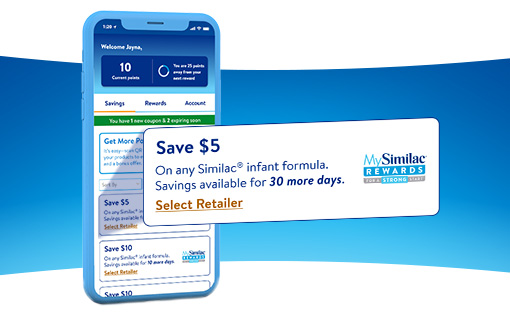Free Sample Rewards: Unlocking Benefits for Customers
In today’s competitive market, businesses are always seeking new ways to attract and retain customers. One effective strategy gaining traction is offering free sample rewards. This approach not only enhances customer engagement but also encourages loyalty and boosts sales. Did you know that over 60% of consumers are more likely to make a purchase from a brand that offers free samples? In this article, we will explore the various aspects of free sample rewards, their benefits, and how businesses can effectively implement them.
As we delve into this topic, you’ll learn about the specific mechanisms behind free sample rewards, how they impact consumer behavior, and practical tips for executing such programs successfully. This exploration will cover:
- The psychology of free samples
- Strategies for effective sample distribution
- Measuring success and ROI from sample rewards
- Real-world examples of successful campaigns
- Potential pitfalls to avoid
The Psychology Behind Free Samples
Understanding the psychology of why consumers are drawn to free samples is crucial for businesses. The allure of ‘free’ taps into basic consumer instincts, creating a sense of urgency and value. When people receive a free sample, they often feel a sense of reciprocity, motivating them to return the favor by making a purchase. Research indicates that experiential marketing techniques, like offering samples, lead to a higher likelihood of purchase compared to traditional advertising.
Creating a Sense of Urgency
Utilizing time-limited sample offers can further enhance customer interest. For instance, “limited-time offers” create a fear of missing out (FOMO), compelling consumers to act quickly. Such strategies are particularly effective when paired with effective marketing efforts via social media and email campaigns.
Building Trust and Relationship
Offering something for free fosters a connection between the brand and the consumer. This approach helps build trust, showing that the business is confident in the quality of its products. By allowing customers to experience a product firsthand, brands can minimize perceived risks associated with purchasing unknown items.
Strategies for Effective Sample Distribution
Implementing successful free sample programs requires careful planning and execution. Here are some strategies businesses can follow:
Identifying Target Audiences
The first step is to identify your target audience. Knowing who your potential customers are and understanding their preferences is essential for effective sampling. Tailoring sample products to specific audience segments increases the chances of conversion.
Choosing Distribution Channels
Distribution channels play a vital role in how samples reach potential customers. Options may include:
- At live events and trade shows
- In-store promotions
- Online requests through the website
- Partnerships with influencers and affiliates
Crafting an Engaging Experience
Simply handing out free samples is not enough. Creating an engaging experience around the samples can enhance customer interaction. This could involve showcasing how to use the products, offering tutorials, or incorporating sample giveaways into larger community events.
Measuring Success and ROI
To evaluate the effectiveness of free sample campaigns, businesses must establish clear metrics for success. Consider the following:
Monitoring Customer Feedback
Gathering feedback through surveys or social media comments can provide insights into customer perceptions of the samples. Evaluating this feedback helps in making informed decisions for future offers.
Tracking Conversion Rates
One of the primary goals of offering free samples is to drive sales. Businesses should analyze conversion rates, examining how many customers who received samples ultimately made a purchase. Understanding this correlation can help measure the program’s return on investment (ROI).
Data Analytics
Utilizing data analytics tools can help businesses gauge the success of their free sample campaigns in real time, allowing for adjustments as necessary. Data-driven decisions facilitate a more effective marketing strategy overall.
Real-World Examples of Successful Campaigns
Many brands have successfully implemented free sample rewards to enhance their customer base. Here are some noteworthy examples:
Beauty Brands and Make-up Samples
Beauty brands often capitalize on free samples as a significant portion of their marketing strategy. By offering makeup samples at beauty counters or through their online stores, companies like Sephora allow customers to experiment with products before committing to full-size purchases. This tactic has proven highly effective in building brand loyalty and encouraging repeat purchases.
Food and Beverage Industry Samples
Grocery stores frequently use food samples as a way to persuade shoppers to try new products. For instance, well-known brands like Costco offer food samples to entice buyers, resulting in unexpected purchase spikes and satisfied customers.
Potential Pitfalls to Avoid
While free samples can be an effective marketing tool, they must be executed carefully. Avoid these common pitfalls:
Failure to Follow Up
After distributing samples, businesses should have a follow-up strategy in place. Neglecting to connect with customers post-sampling can lead to missed opportunities for sales and relationship-building.
Misjudging Customer Preferences
Offering samples that do not align with customer interests can backfire. Conducting market research before launching a sampling campaign is vital to ensure product relevance.
Overly Complicated Redemption Processes
If the process for redeeming a sample is too complicated or time-consuming, consumers may get frustrated and disengage. Keeping the sample collection process straightforward is essential for maintaining customer enthusiasm.
Conclusion
In conclusion, free sample rewards present a powerful tool for businesses to enhance customer engagement, promote brand loyalty, and ultimately drive sales. By understanding the psychology behind consumer behavior, implementing effective distribution strategies, measuring success, and avoiding common pitfalls, brands can create successful sampling campaigns. With the right approach, free sample rewards can significantly benefit both customers and businesses alike.
If you want to see more about customer rewards strategies, check out this informative article on customer rewards programs.

By embracing the concept of free sample rewards, businesses are not just giving away products; they are gaining invaluable insights into customer preferences, building relationships, and creating a loyal customer base that will support their growth for years to come.
